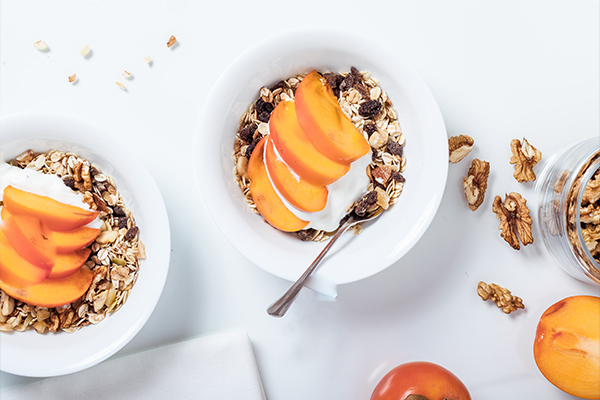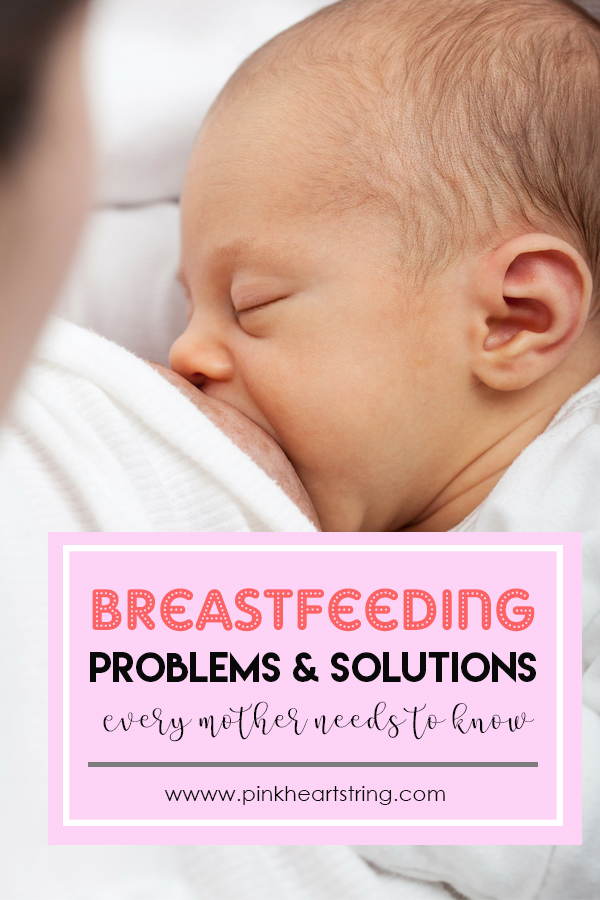Every new mother is duty bound to be well abreast of the top breastfeeding problems and solutions to prepare her for the daunting task of rearing an infant.
Motherhood can be one of the most celebrated milestones in a woman’s life. But this comes with a caveat, as breastfeeding can be a crippling ordeal for some women.
They have to deal with excruciating pain linked to breast feeding like breast infection and the inability to produce enough milk to nourish their baby.
Here then are the top breastfeeding problems and solutions to make breastfeeding less cumbersome for moms.
1. Low milk supply
There are factors that adversely affect the amount of milk a mother can extract from her breast. One of which is due to existing medical conditions such as the following:
2. Anemia.
Anemic mothers are often inept to produce copious amounts of milk compared to moms that are not gripped by severe anemia.
Being anemic can actually make you predisposed to insufficient milk syndrome.
3. Mammary hypoplasia.
This is a rare condition where the breast’s glandular tissue is not capable of producing enough milk.
Breast surgery – If you had previous breast surgery, then you are more inclined to have low breast milk supply.
Hormonal disorders such as the following:
- Thyroiditis
- Diabetes
- Adrenal Insufficiency
- Polycystic ovarian syndrome, and other hormonal disorders.
If you had any of these medical conditions, contact your breastfeeding specialist.
How to increase breast milk supply to address one of the top breastfeeding problems?
Nurse your baby more often. Newborns feed quite often, usually around 8- 12 times a day, around the clock.
The more you nurse him, the more your breast pumps out milk.
Your breast operates through a process of supply and demand, prodding your body to produce more milk as you nurse your little one.
Remember to nurse on both sides so both breasts can yield more milk for your baby.
Don’t wait for your little one to get so emotionally distressed and agitated before you feed him.
Crying is a late indicator of hunger according to the American Academy of Pediatrics, so feed your baby within two hours or less after the last breastfeeding session.
You can also nurse your baby on demand, meaning you must be sensitive to your baby’s hunger cue and continue to feed him until you satiate his cravings for breast milk.
Remember that your baby has a small tummy which explains his insatiable appetite for milk.
Adopt a healthy lifestyle. The healthier you are, the greater is the possibility of having nutritious, sufficient breast milk for your baby.
Know that there are still naturally occurring vitamins and minerals in breast milk even when a mother’s diet is at times devoid of nutrients, but having a healthy diet while breastfeeding is recommended.
What foods produce breast milk?

Though there is no conclusive research about the veracity of the claims, there is a myriad of anecdotal evidence of moms who successfully increase their breast milk supply by consuming foods and herbs that encourage milk production.
But be careful when consuming such foods and herbs, as they come with some side effects. And don’t forget to consult your trusted doctor for advice.
It is always better to err on the side of caution when you and your baby’s health are on the line.
Nevertheless, there are certain safe recipes that you can use to help boost your milk supply.
Drink enough water
As you breastfeed, your baby is also hydrating himself. Thus, breastfeeding mothers feel emaciated as they lose a lot of fluid from prolonged breastfeeding sessions.
Power pump- For 2- 3 consecutive days, after every nursing session, try to pump milk for 10 -20 minutes.
This is to rid your breast of the remaining milk after every nursing session. Doing so will prompt your body to produce more milk.
Have enough rest.
The more stressed you are, the more your breast milk flows to a trickle.
Find time to relax no matter how hectic your schedule is, and try to sleep like a log when given a chance.
Replace your pumping parts
Do this when you notice that your milk production slows down. The ideal is every month to six weeks if you are pumping milk regularly.
Try breast massage while nursing or pumping milk
This will speed up milk production as you push out more milk while nursing your baby. You can do the same while pumping residual milk from your breasts after a nursing session.
How to know if my baby is not getting enough breast milk?
Baby’s inability to get enough milk is one of the top breastfeeding problems that require your immediate attention. But sadly, a scant amount of breastmilk is just one of the factors.
There are other reasons why your baby is not taking in enough milk even if your breast milk is not in short supply.
Here are some of the reasons:
- You may not be breastfeeding him as frequently as you should.
- It’s possible that you may be feeding him quite frequently but not long enough to satiate his hunger.
- You may have a condition that makes it hard for him to extract milk from you.
- Your baby is not properly latched on to your breast. To learn how to make your baby latch on correctly, read on our tips on Proper Breastfeeding Techniques for Latching and Positioning.
Signs your baby is not taking in enough milk
If your baby is dehydrated and poops less than what is normal, these are indications that he is not getting enough breast milk.
Dark-colored urine, a dry and sticky mouth, sunken eyes, jaundice, dry mouth, dry cool skin, and irritability indicate that your baby is dehydrated and not feeding well.
However, not getting enough breast milk is not the only cause of dehydration. Diarrhea, vomiting, fever, and excessive sweating can also dehydrate him.
So seek medical help should your baby exhibit any of these symptoms.
Inadequate weight gain can also be a sign. It is normal for newborn babies to lose weight during the first few days after birth, but they are expected to gain back the weight they lost on the 10th to 14th day.
What does it mean when my breast hurts while breastfeeding?
You may have candida mastitis if you have the following.
- You feel a stabbing pain in your breast
- Your breast turns red or pink
- Flu-like symptoms like chills and fever
If you exhibit any of the symptoms, contact your doctor or lactation consultant immediately.
The baby can also be afflicted with the same infection on his mouth and on his bum, so try to get medical treatment for you both in the soonest time possible.
Usually, your doctor will give you certain medications to treat the infection. But for some, the medications are not enough to heal the infected breasts.
One woman only recovered after she used the prescribed medications and cut down her consumption of sugary foods.
She also ate probiotic yogurts to strengthen the digestive tract, increasing the good bacteria to fight off the infection.

How do I stop my nipples from hurting while breastfeeding?
To stop your nipples from hurting, gently massage the sore area before nursing your baby. Some moms also find pumping milk for 2-3 consecutive days effectively heals their sore and cracked nipples earlier than usual.
You can also tuck clean chilled cabbage leaves into your breast between feedings if they are swollen and inflamed.
Chilled cabbage is proven effective in offering pain relief and reducing swelling of sore breasts.
But if you have a meager amount of breastmilk, avoid using chilled cabbage as it can dry up milk supply.
How to stop leaking breasts when not breastfeeding?
There is no fool-proof solution to this dilemma faced by moms who have an abundant supply of breast milk.
But you can mitigate the amount of milk flow by placing chilled cabbage leaves on your breast.
You may also drink herbal teas that reduce breast milk supply like sage, but always consult your doctor before ingesting anything or addressing any of the top breastfeeding problems you may encounter as you nurse your little one.


I remember when I breastfed my children many years ago, I experienced severe pain on my nipples for some time, I was told, it was part of what you’ll experience as a new mother when I became so worried. The pain subsided after I continued feeding my baby through the pain. It wasn’t a good experience at all, but I’ll never trade anything for breastfeeding, it’s the best start to life for a baby. This article is awesome and all new mums planning or already breastfeeding their babies, should read it.
I’ll share this with my friends who are about to have babies. Lots of useful information here.
Great info with regards to breastfeeding problems. I love that you also offered solutions on dealing with low production and other issues that women deal with post partum.
Absolutely a good piece of advice with practical tips for all new breast feeding mums, thanks for this informative sharing
cheers, siennylovesdrawing
This is indeed very helpful especially to a new mum like me that’s breastfeeding. And yeah I’ve noticed to my daughter that she don’t take the milk anymore if I let her cry for a wee while
As much as I want to become pregnant, This has to be the second part of becoming a mother that scares me. You know the first being giving birth. Candida mastitis doesn’t make me feel any better, but this was very informative.
I love your article! I don’t have kids yet but, breastfeeding has alway scared me. This post is very informative.